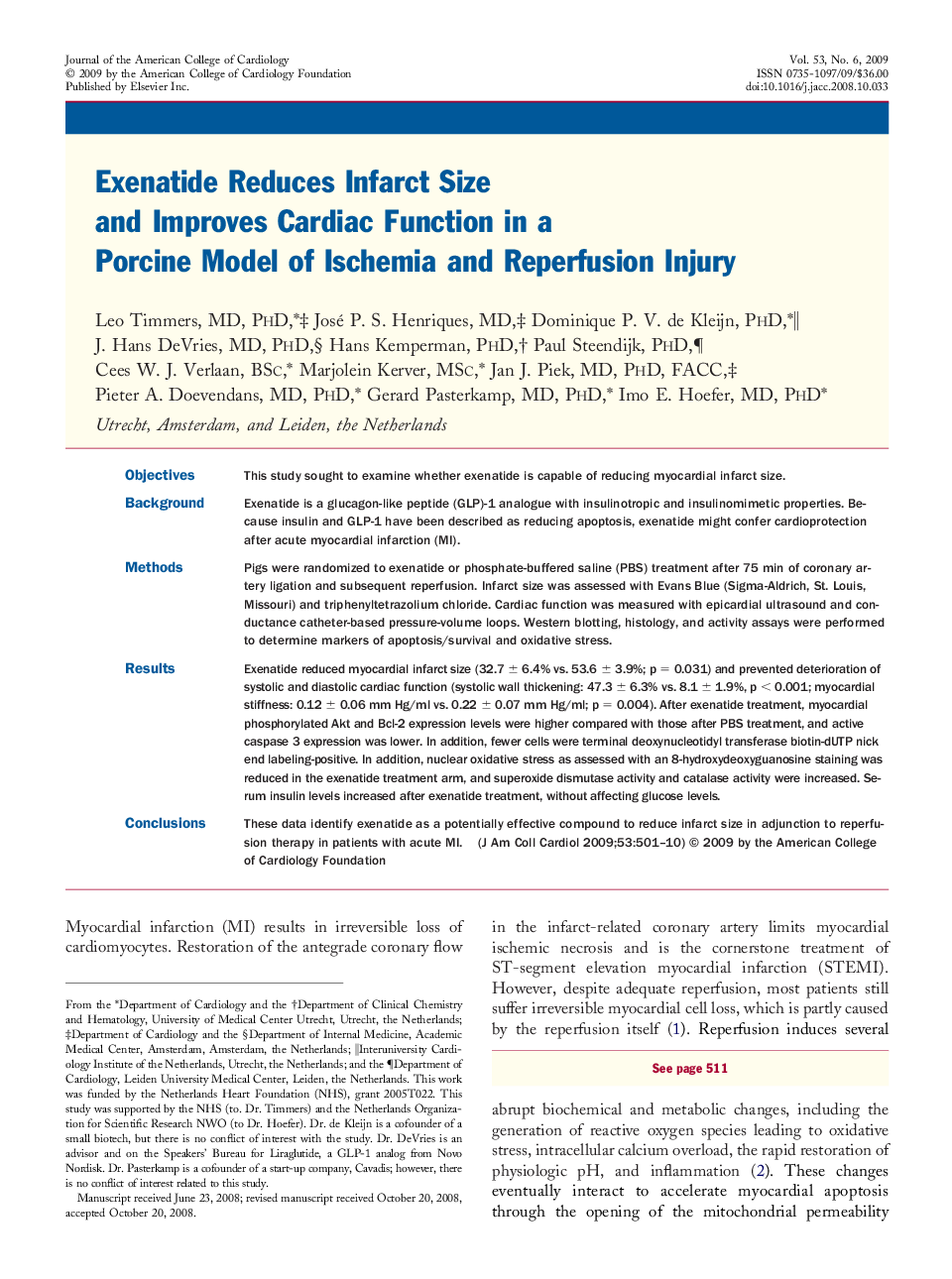| کد مقاله | کد نشریه | سال انتشار | مقاله انگلیسی | نسخه تمام متن |
|---|---|---|---|---|
| 2951367 | 1577384 | 2009 | 10 صفحه PDF | دانلود رایگان |

ObjectivesThis study sought to examine whether exenatide is capable of reducing myocardial infarct size.BackgroundExenatide is a glucagon-like peptide (GLP)-1 analogue with insulinotropic and insulinomimetic properties. Because insulin and GLP-1 have been described as reducing apoptosis, exenatide might confer cardioprotection after acute myocardial infarction (MI).MethodsPigs were randomized to exenatide or phosphate-buffered saline (PBS) treatment after 75 min of coronary artery ligation and subsequent reperfusion. Infarct size was assessed with Evans Blue (Sigma-Aldrich, St. Louis, Missouri) and triphenyltetrazolium chloride. Cardiac function was measured with epicardial ultrasound and conductance catheter-based pressure-volume loops. Western blotting, histology, and activity assays were performed to determine markers of apoptosis/survival and oxidative stress.ResultsExenatide reduced myocardial infarct size (32.7 ± 6.4% vs. 53.6 ± 3.9%; p = 0.031) and prevented deterioration of systolic and diastolic cardiac function (systolic wall thickening: 47.3 ± 6.3% vs. 8.1 ± 1.9%, p < 0.001; myocardial stiffness: 0.12 ± 0.06 mm Hg/ml vs. 0.22 ± 0.07 mm Hg/ml; p = 0.004). After exenatide treatment, myocardial phosphorylated Akt and Bcl-2 expression levels were higher compared with those after PBS treatment, and active caspase 3 expression was lower. In addition, fewer cells were terminal deoxynucleotidyl transferase biotin-dUTP nick end labeling-positive. In addition, nuclear oxidative stress as assessed with an 8-hydroxydeoxyguanosine staining was reduced in the exenatide treatment arm, and superoxide dismutase activity and catalase activity were increased. Serum insulin levels increased after exenatide treatment, without affecting glucose levels.ConclusionsThese data identify exenatide as a potentially effective compound to reduce infarct size in adjunction to reperfusion therapy in patients with acute MI.
Journal: Journal of the American College of Cardiology - Volume 53, Issue 6, 10 February 2009, Pages 501–510